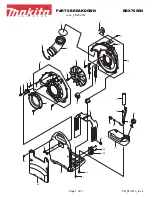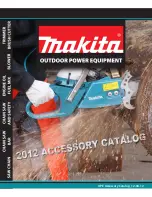
8
Tips for Trenching
•
Clean the area of trash, branches and rocks before
trenching to prevent equipment damage.
•
Always begin trenching with the slowest ground speed
possible. Increase speed if conditions permit.
•
Always use full throttle (maximum engine speed)
when trenching.
•
Always trench backwards (i.e., in reverse).
•
Never transport the trencher with the loader arms
raised. Keep the arms lowered and the trencher tilted
up.
•
When trenching, the spoils auger should just clear the
original ground surface to obtain maximum soil
removal.
•
Trench at a 45 to 60 degree angle for best results.
•
You will be able to dig a trench faster by controlling
the depth with periodic adjustments of the loader arms.
•
Use low range (turtle position) for best performance
and smoothest operation. Adjust the flow divider
valve to approximately the 10 o’clock position.
•
If the trencher binds in the soil, push the auxiliary
hydraulics lever fully forward to reverse the chain
direction. Once the chain is loose, pull the lever
rearward again and continue trenching.
Maintenance
Service Interval Chart
Service Operation
Each
Use
5
Hours
25
Hours
200
Hours
Storage
Service
Notes
Planetary gear case oil—check level
Initial
X
Digging chain—lubricate
X
X
Digging chain tension—adjust
X
X
more often under
extreme conditions
(i.e., rocky, clay soil,
etc. . .)
Trencher teeth—check & replace
X
as required
Spoils auger—tighten
X
as required
Chipped surfaces—paint
X
CAUTION
POTENTIAL HAZARD
•
If you leave the key in the ignition switch, someone could start the engine.
WHAT CAN HAPPEN
•
Accidental starting of the engine could seriously injure you or other bystanders.
HOW TO AVOID THE HAZARD
•
Remove the key from the ignition switch before you do any maintenance.









































